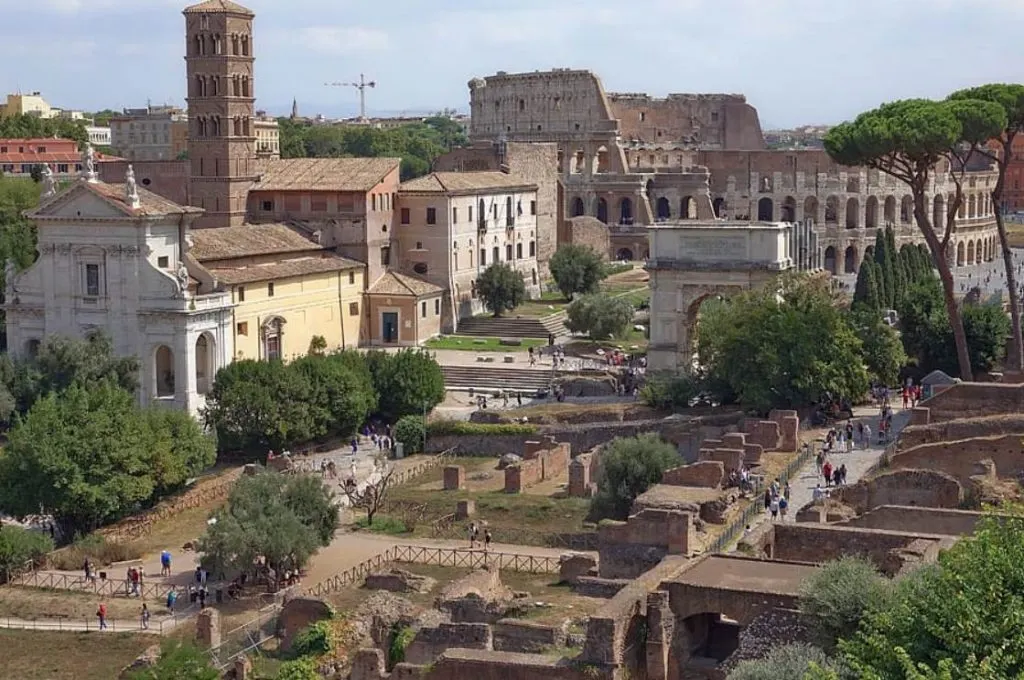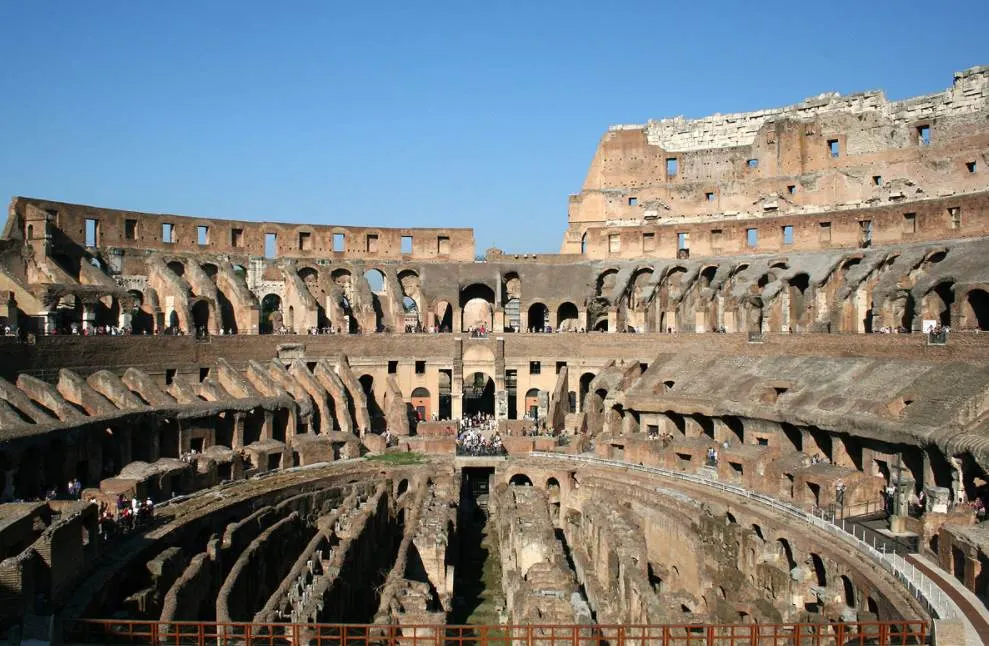A lot can be said about the infamous Emperor Nero, but not that he didn’t have a good sense of style.
One of his most opulent projects was a structure called the Domus Aurea or “The Golden House.” The name itself explains why some people might believe that his life of decadence was the prelude to his eventual downfall.
In this article, we’ll take a closer look at some of the most interesting facts about Nero’s Domus Aurea, one of the ruined buildings in Rome that has several fascinating stories to tell.
1. It’s located on a hill just north of the Colosseum
The Domus Aurea is the name of the now-ruined landscape complex that once served as the palace of Roman Emperor Nero (37-68 A.D.). His reign lasted between 54 and 68 A.D., effectively ending when he killed himself.
He was the fifth Roman Emperor and one of the most notorious ones as well. He became infamous for his cruelty, especially after he killed his mother.
The Great Fire of Rome in the year 64 marked the definite turning point of his reign. He blamed the Christians and actively persecuted them. This only sparked rumors that he lit the fire so he could build his Golden House.
Regardless of what happened, he remains one of the most controversial figures in human history.
The immense palace was largely located on the Oppian Hill, just north of the Colosseum (which wasn’t constructed yet back then) and just east of the Roman Forum.

2. It partially replaced an existing palace that was destroyed the Great Fire
The Great Fire of Rome destroyed large parts of the city, including the first palace of Emperor Nero called the Domus Transitoria. The name of this palace is a reference to the fact that it connected various villas and gardens.

This palace was probably only recently completed in the year 60. This is just one of the main reasons to suggest that Nero wasn’t involved in lighting the fire in the year 64.
The Domus Aurea nevertheless partially replaced the damaged structure which was immensely expanded as well. Today, the exuberant palace is nothing more than a ruined structure located beneath a pubic park.

3. The Colosseum was constructed on the villa’s artificial lake
It’s hard to fathom how big the Golden House was. The entire palace complex covered an area of 2.6 square kilometers (1 square mile) and featured a huge artificial lake.
The main structure consisted of a huge villa with 3 floors and was richly decorated with frescoes, marble, jewels, and even ivory. All of the precious gems and valuables were stripped within a decade after Nero died.
A huge statue of Nero once stood next to the villa and lake called the “Colossus Neronis.” The Flavian Amphitheater, the biggest Roman amphitheater ever constructed, was built on top of this artificial lake.
The official name of the amphitheater was a reference to Roman Emperor Vespasian who constructed it shortly after he came to power in 69 A.D. It was nicknamed for the statue that once stood next to it.

4. The complex was only rediscovered in the 15th century
The valuables inside the building were stripped shortly after Nero died, and the new Flavian Dynasty constructed multiple structures in its vicinity. The Golden House was considered to be the epitome of excess.
The Golden House was covered over with earth and the Baths of Titus were built on top of it. The Colosseum was constructed on top of the lake and both the Baths of Trajan and the Temple of Venus and Roma believed to have been the largest temple in Ancient Rome, were constructed here in the 2nd century.
With all these buildings and the area completed covered with earth, the Golden Houe of Nero was completely forgotten until the Renaissance. Somebody fell down a hole in the area and found himself surrounded by ancient frescoes.
One of the most fascinating facts about the Domus Aurea is that the artworks on the walls had a profound effect on the Renaissance artists of the 15th and 16th centuries.

5. The future of the Golden House’s remains doesn’t look promising
Because the structure was completely sealed off for numerous centuries, the frescoes had been reserved remarkably well when they were rediscovered during the Renaissance.
This isn’t the case anymore because several centuries of high humidity levels have virtually erased most of these magnificent works of art.
Then humidity isn’t the biggest problem for the building, though, but the park that is located on top of it. Tree roots have caused severe damage and experts believe that the weight on top of the building will eventually make it collapse.
Because of trees, it’s virtually impossible to lessen the weight without damaging the structure itself. The building has been closed for visitors on multiple occasions due to the imminent danger and the future looks rather dim, despite ongoing excavations.

More interesting facts about the Domus Aurea
6. The Domus Aurea was probably never completed. The building was still inhabited for numerous decades, though, and parts on the Oppian Hill were completed. A fire eventually made it inhabitable in the year 104 A.D.
7. The Colosseum was constructed on top of an artificial lake that had to be completely drained. This was a massive endeavor in the 1st century but also had a practical benefit.
One of the most amazing spectacles held at the Colosseum were mock naval battles. The arena was completely flooded so ships could sail on the arena floor. This allowed for the reenactment of naval battles fought by the Roman army.

8. The statue of Nero that once stood next to the Domus Aurea is believed to have been 36.6 meters (120 feet) tall. This wasn’t the only extravagant feature, though, because part of the interior walls was covered with gold leaf.
Yes, Nero definitely had an expensive taste.

9. Many of the paintings inside Nero’s Golden House were painted by an ancient artist named Famulus. His works had a profound effect on not only Renaissance artists but also Neoclassical artists in the 18th century.
Michelangelo and Raphael are believed to have descended into the rooms of the building to study the works of this ancient master.
10. A lot of money has been spent by the Italian government to strengthen the structure so it can become a popular tourist attraction. The project started in 200 and cost 18 million euros.
Another 31 million euros was spent to lessen the weight of the park on top of the building. We can only hope that it will be enough to save this remarkable piece of history in the heart of the city.

